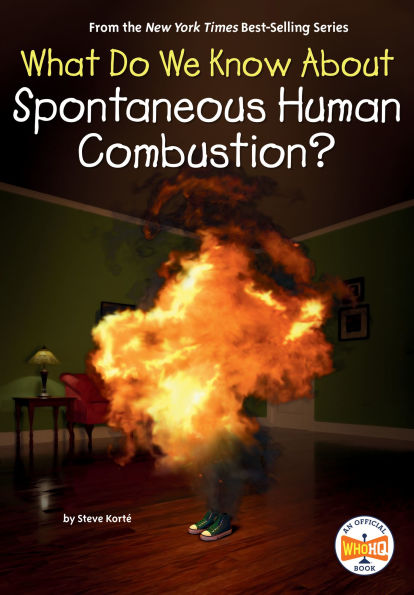Can a person catch on fire without any reasonable explanation? Find out all we know about spontaneous human combustion in this exciting new book!
A fire that burns without an obvious source of ignition isn't possible...right? In What Do We Know About Spontaneous Human Combustion?, curious young readers will explore all we know about this odd phenomenon, its history, and suggested theories and explanations. Can spontaneous human combustion be caused by something called ball lightning? Or can it be explained by something called the wick effect? From the infamous spontaneous combustion of Madame Nicole Millet in 1725 to the most recent case of spontaneous human combustion in 2020 in Estonia, scientists continue to search for a logical explanation. Ignite your curiosity with this exciting new book that covers the history, the science, and the mystery of SHC!
1146628494
A fire that burns without an obvious source of ignition isn't possible...right? In What Do We Know About Spontaneous Human Combustion?, curious young readers will explore all we know about this odd phenomenon, its history, and suggested theories and explanations. Can spontaneous human combustion be caused by something called ball lightning? Or can it be explained by something called the wick effect? From the infamous spontaneous combustion of Madame Nicole Millet in 1725 to the most recent case of spontaneous human combustion in 2020 in Estonia, scientists continue to search for a logical explanation. Ignite your curiosity with this exciting new book that covers the history, the science, and the mystery of SHC!
What Do We Know About Spontaneous Human Combustion?
Can a person catch on fire without any reasonable explanation? Find out all we know about spontaneous human combustion in this exciting new book!
A fire that burns without an obvious source of ignition isn't possible...right? In What Do We Know About Spontaneous Human Combustion?, curious young readers will explore all we know about this odd phenomenon, its history, and suggested theories and explanations. Can spontaneous human combustion be caused by something called ball lightning? Or can it be explained by something called the wick effect? From the infamous spontaneous combustion of Madame Nicole Millet in 1725 to the most recent case of spontaneous human combustion in 2020 in Estonia, scientists continue to search for a logical explanation. Ignite your curiosity with this exciting new book that covers the history, the science, and the mystery of SHC!
A fire that burns without an obvious source of ignition isn't possible...right? In What Do We Know About Spontaneous Human Combustion?, curious young readers will explore all we know about this odd phenomenon, its history, and suggested theories and explanations. Can spontaneous human combustion be caused by something called ball lightning? Or can it be explained by something called the wick effect? From the infamous spontaneous combustion of Madame Nicole Millet in 1725 to the most recent case of spontaneous human combustion in 2020 in Estonia, scientists continue to search for a logical explanation. Ignite your curiosity with this exciting new book that covers the history, the science, and the mystery of SHC!
6.99
Pre Order
5
1

What Do We Know About Spontaneous Human Combustion?
112
What Do We Know About Spontaneous Human Combustion?
112Related collections and offers
6.99
Pre Order

Product Details
| ISBN-13: | 9798217049226 |
|---|---|
| Publisher: | Penguin Young Readers Group |
| Publication date: | 09/02/2025 |
| Series: | What Do We Know About? |
| Sold by: | Penguin Group |
| Format: | eBook |
| Pages: | 112 |
| Age Range: | 8 - 12 Years |
About the Author
From the B&N Reads Blog
